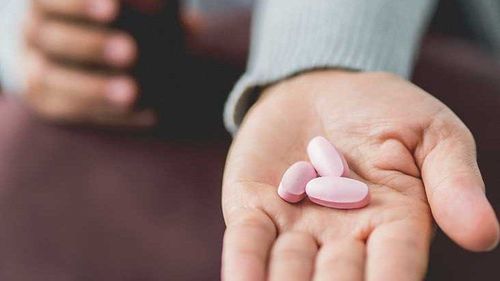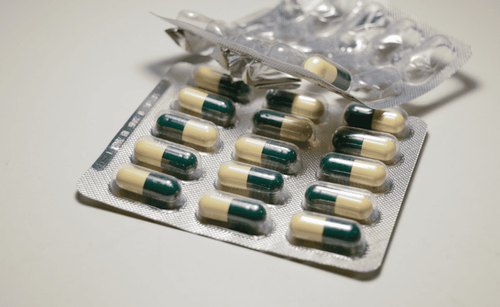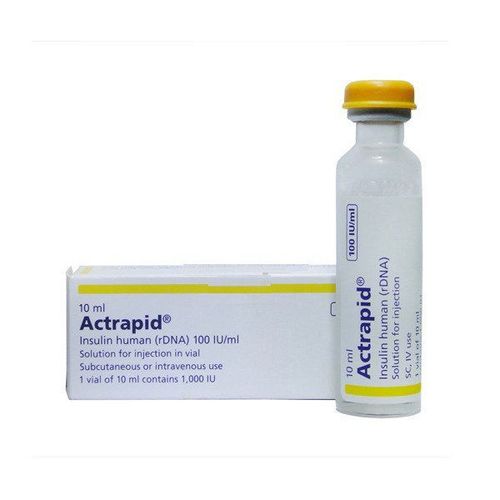This is an automatically translated article.
Savdiaride is a drug that helps lower blood sugar by increasing insulin production, the drug is indicated for use in patients with non-insulin dependent diabetes mellitus.
1. What does Savdiaride do?
Savdiaride with the main ingredient is Glimepiride, with different content. Savdiaride 2 has the ingredient Glimepiride 2mg, Savdiaride 4 has the ingredient Glimepiride 4mg. Glimepiride is a type 2 antidiabetic drug also known as non-insulin dependent diabetes mellitus sulfonylurea. Glimepiride's main effect is to help stimulate pancreatic beta cells to release insulin, so the drug only works when the pancreas is still able to release insulin. The mechanism of action of Glimepiride is by binding to receptors in the membrane of pancreatic islet beta cells, which closes ATP-dependent potassium channels. Closing of the potassium channel causes membrane depolarization, which opens the calcium channel, allowing increased calcium ions to enter the cell. An increase in intracellular calcium concentration is a factor that stimulates the release of insulin from the cell.
Glimepiride lowers blood glucose in people with diabetes and also in healthy people without diabetes. With long-term use Glimepiride and sulfonylureas also have some extrapancreatic effects, such as increased sensitivity of peripheral tissues to insulin and decreased hepatic glucose production, increasing the effectiveness of the drug.
Glimepiride can be used alone or in combination, the drug has a synergistic effect with Metformin or with insulin.
2. Indications and contraindications of Savdiaride
Savdiaride is indicated as an adjunct to diet and exercise to lower blood glucose in non-insulin dependent diabetic patients when blood glucose levels are not controlled satisfactorily. worth it with diet and exercise.Savdiaride is contraindicated for use in the following cases:
Hypersensitivity to glimepiride, sulfonylurea or sulphonamides or any of its ingredients. Insulin-dependent diabetes mellitus, diabetic ketoacidosis coma. Hepatic impairment, severe renal impairment: This drug should be switched to insulin. Pregnant women and lactating women.
3. Dosage and administration of Savdiaride
3.1 How to take Savdiaride is taken orally. Should be taken once a day before breakfast or before the first main meal of the day.
3.2 Dosage The starting dose: Usually in adults is 1 to 2mg once a day. In debilitated or elderly patients, with hepatic or renal impairment, patients at high risk of hypoglycaemia should be initiated at a dose of 1 mg once daily. Maintenance dose: The usual maintenance dose is 1 - 4mg once a day. In patients already receiving glimepiride 1 mg/day, the dose may be increased to 2 mg/day without the desired blood glucose level after 1 to 2 weeks of treatment. The dose should be increased slowly, each time increasing by no more than 2mg/day and increasing at intervals of 1-2 weeks. The maximum dose is 8mg once a day. 3.3 Missed dose and overdose Overdose: Overdose of these drugs can cause hypoglycemia, severe can cause severe hypoglycemia to the point of death. Treatment of mild hypoglycemia, without unconsciousness or loss of neurological signs, the patient should take glucose and adjust the dose of drugs and/or diet; Severe hypoglycemia accompanied by coma, convulsions or impaired neurological function rarely occurs, the patient must be taken to the hospital immediately, treatment requires rapid intravenous injection of glucose solution of concentration 50 %, followed by a further infusion of a more dilute glucose solution (10%) to maintain a blood glucose level of about 100 mg/dl, although blood glucose levels are elevated, the patient should be monitored for at least 24 to 48 hours. Missed dose: Take this medicine as soon as you remember and before the next main meal. However, if the interval between the next dose is too short, skip the missed dose and resume the dosing schedule.
4. Undesirable effects of the drug Savdiaride
When using Savdiaride medicine may experience undesirable effects:
Low blood sugar is the most important side effect of using this drug, you should not use the drug without eating a meal right after to reduce the risk of hypoglycemia. Other common side effects: Dizziness, dizziness, headache; Nausea, vomiting, feeling full in the epigastrium, abdominal pain, diarrhea; At the beginning of the drug, temporary visual disturbances due to changes in blood glucose levels may also occur. Uncommon: Allergic or pseudo-allergic skin reactions, redness, urticaria, itching; Rare: Increased liver enzymes, jaundice or yellow eyes, impaired liver function; Mild or severe thrombocytopenia; hemolytic anemia; erythrocytopenia, leukopenia or agranulocytosis; Allergic vasculitis ; increased sensitivity to light. When experiencing side effects of the drug, you need to stop using and notify your doctor immediately or need to go to the nearest medical facility for timely treatment.
5. Things you need to pay attention to when taking Savdiaride
Before using the drug you should talk to your doctor about your allergy history, medical history and you should also be informed about the potential risks and benefits of treatment with glimepiride as well as the choice of treatment regimen replace. Some risks patients need to be aware of when taking drugs such as:
Hypoglycaemia: All sulfonylureas have the potential to cause severe hypoglycemia. This risk is increased in patients with impaired renal function; weakness or malnutrition, liver failure, adrenal or pituitary gland failure. Symptoms of hypoglycemia are also less noticeable in the elderly, people taking beta-blockers or other sympathomimetic drugs. Allergic Reactions: Allergic reactions have been reported with glimepiride treatment, including severe allergic reactions anaphylaxis, angioedema and Stevens-Johnson syndrome. Hemolytic anemia: Sulfonylureas may cause hemolytic anemia in patients with glucose 6-phosphate dehydrogenase (G6PD) deficiency. Therefore, use with caution in patients with G6PD deficiency and alternative non-sulfonylurea therapy may also be considered. Increased cardiovascular risk: There have been reports of an increased risk of cardiovascular disease with oral hypoglycemic agents compared with diet alone or with diet combined with insulin. Patients should be informed of the potential risks and benefits of glimepiride. Ability to drive and use machines: When taking this medicine, there may be hypoglycaemia or hyperglycaemia, impaired vision, which may impair the ability to concentrate and react. Therefore, extreme caution should be exercised when driving or operating machinery.
Monitor blood sugar periodically when taking the drug from 3 to 6 months, to assess the patient's blood sugar control level.
Diet, exercise and weight loss when overweight are essential for you to have good control of your blood sugar level.
6. Drug interactions
The following drug combinations may cause hypoglycemia: sulfonylureas with non-steroidal anti-inflammatory drugs, drugs that are strongly protein bound such as sulfonamides, chloramphenicol, coumarin, probenecid, MAO inhibitors, beta blockers . Combinations of drugs that can cause hyperglycemia and may lead to loss of blood glucose control: sulfonylureas with thiazide diuretics and other diuretics, corticosteroids, phenothiazines, thyroid medications, estrogens, contraceptives oral pregnancy, phenytoin, nicotinic acid, sympathomimetics and isoniazid. The combination of oral antidiabetic agents with oral miconazole carries a risk of severe hypoglycaemia. When taking this medicine, there may also be reactions to other drugs or foods. You should tell your doctor about the medications you are taking.
Above is information about uses, usage and things to keep in mind when using Savdiaride. Use this medicine under the prescription and doctor, need to monitor during the course of taking the drug, if there is any abnormality, you should notify the doctor immediately.
Please dial HOTLINE for more information or register for an appointment HERE. Download MyVinmec app to make appointments faster and to manage your bookings easily.













